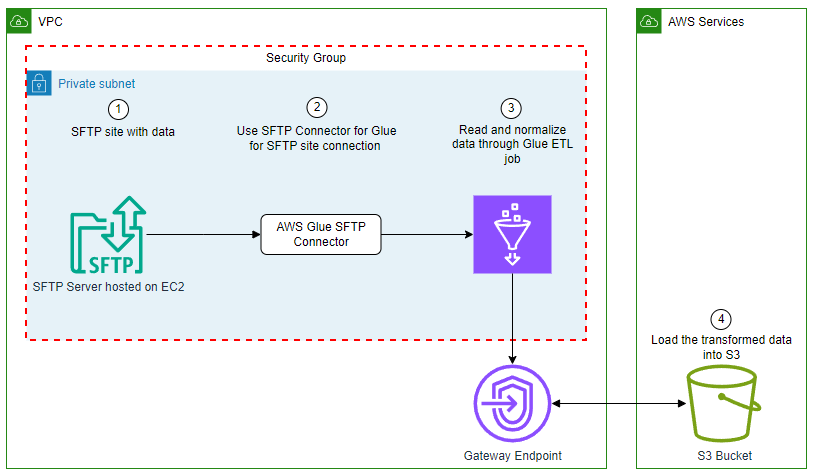AWS Big Data Blog
Category: Learning Levels
Integrate Tableau and Microsoft Entra ID with Amazon Redshift using AWS IAM Identity Center
This blog post provides a step-by-step guide to integrating IAM Identity Center with Microsoft Entra ID as the IdP and configuring Amazon Redshift as an AWS managed application. Additionally, you’ll learn how to set up the Amazon Redshift driver in Tableau, enabling SSO directly within Tableau Desktop.
Attribute Amazon EMR on EC2 costs to your end-users
In this post, we share a chargeback model that you can use to track and allocate the costs of Spark workloads running on Amazon EMR on EC2 clusters. We describe an approach that assigns Amazon EMR costs to different jobs, teams, or lines of business. You can use this feature to distribute costs across various business units. This can assist you in monitoring the return on investment for your Spark-based workloads.
Copy and mask PII between Amazon RDS databases using visual ETL jobs in AWS Glue Studio
In this post, I’ll walk you through how to copy data from one Amazon Relational Database Service (Amazon RDS) for PostgreSQL database to another, while scrubbing PII along the way using AWS Glue. You will learn how to prepare a multi-account environment to access the databases from AWS Glue, and how to model an ETL data flow that automatically masks PII as part of the transfer process, so that no sensitive information will be copied to the target database in its original form.
How Kaplan, Inc. implemented modern data pipelines using Amazon MWAA and Amazon AppFlow with Amazon Redshift as a data warehouse
Kaplan, Inc. provides individuals, educational institutions, and businesses with a broad array of services, supporting our students and partners to meet their diverse and evolving needs throughout their educational and professional journeys. In this post, we discuss how the Kaplan data engineering team implemented data integration from the Salesforce application to Amazon Redshift. The solution uses Amazon Simple Storage Service as a data lake, Amazon Redshift as a data warehouse, Amazon Managed Workflows for Apache Airflow (Amazon MWAA) as an orchestrator, and Tableau as the presentation layer.
Optimize cost and performance for Amazon MWAA
Amazon Managed Workflows for Apache Airflow (Amazon MWAA) is a managed service for Apache Airflow that allows you to orchestrate data pipelines and workflows at scale. With Amazon MWAA, you can design Directed Acyclic Graphs (DAGs) that describe your workflows without managing the operational burden of scaling the infrastructure. In this post, we provide guidance […]
Embed Amazon OpenSearch Service dashboards in your application
Customers across diverse industries rely on Amazon OpenSearch Service for interactive log analytics, real-time application monitoring, website search, vector database, deriving meaningful insights from data, and visualizing these insights using OpenSearch Dashboards. Additionally, customers often seek out capabilities that enable effortless sharing of visual dashboards and seamless embedding of these dashboards within their applications, further […]
Implement data quality checks on Amazon Redshift data assets and integrate with Amazon DataZone
In this post, we show how to capture the data quality metrics for data assets produced in Amazon Redshift. With Amazon DataZone, the data owner can directly import the technical metadata of a Redshift database table and views to the Amazon DataZone project’s inventory. As these data assets gets imported into Amazon DataZone, it bypasses the AWS Glue Data Catalog, creating a gap in data quality integration. This post proposes a solution to enrich the Amazon Redshift data asset with data quality scores and KPI metrics.
Build a serverless data quality pipeline using Deequ on AWS Lambda
Poor data quality can lead to a variety of problems, including pipeline failures, incorrect reporting, and poor business decisions. For example, if data ingested from one of the systems contains a high number of duplicates, it can result in skewed data in the reporting system. To prevent such issues, data quality checks are integrated into […]
Improve the resilience of Amazon Managed Service for Apache Flink application with system-rollback feature
This post explores how to use the system-rollback feature in Managed Service for Apache Flink.We discuss how this functionality improves your application’s resilience by providing a highly available Flink application. Through an example, you will also learn how to use the APIs to have more visibility of the application’s operations.
Use AWS Glue to streamline SFTP data processing
In this blog post, we explore how to use the SFTP Connector for AWS Glue from the AWS Marketplace to efficiently process data from Secure File Transfer Protocol (SFTP) servers into Amazon Simple Storage Service (Amazon S3), further empowering your data analytics and insights.









